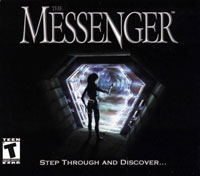

In the ancient labyrinth of the Louvre Museum, where even the paintings occasionally look judgmental, "Louvre: The Final Curse" invites you to join Secret Service agent Morgane Sinclair on a quest that's equal parts adventure and art critique. With a plot that could confuse even the most astute art historian, this PlayStation gem of yesteryear might just make you question your taste in both video games and fine art. Let's dive into this curious blend of history, mysticism, and questionable fashion choices.
Gameplay revolves around the typical adventure genre, mixed with a splash of historical role-play - forget about hiding behind a couch to scare off potential threats; our heroine needs to outsmart dangerous descendants of Black Templars while collecting Satan's Keys (yes, you heard that right!) from the Louvre in three distinct historical eras. Gamers must help Sinclair navigate through intricate puzzles, often involving the most mundane logic: Who would hold a key in the Renaissance? Certainly not da Vinci, right? Each era comes complete with a delightful dose of sarcasm. At a certain point, you'll realize you're playing a game packed with more time travel than a "Back to the Future" marathon.
Let's talk visuals! Diving into the graphics feels like wandering through an art gallery with a malfunctioning spotlight. You get glimpses of beautiful reinterpretations of historical events, yet some snippets may have you raising an eyebrow. With designs that backflip between stunningly detailed backgrounds to cartoonish character designs, it's a mixed bag. It's akin to seeing a masterpiece painted by an artist who also just discovered finger paints! Prepare your eyes accordingly; you'll want to squint at times, wondering if you should be appreciating ``the emperor's new clothes`` or questioning if your vision needs a check-up.
In conclusion, "Louvre: The Final Curse" is a testament to the age-old question: can a game's historical inaccuracies be overshadowed by a well-crafted narrative? For some gamers, this title will strike a nostalgic chord; for others, it might entirely miss the mark. With a solid but not stellar gameplay experience, it's certainly worth a look, especially for fans of the genre or those seeking to examine how vividly time can distort the perception of art. Grab your controller, put on your historical detective hat, and prepare for a journey that could leave you both entertained and slightly confused. Is it a masterpiece or just, well, a painting done by your older cousin? You decide!






